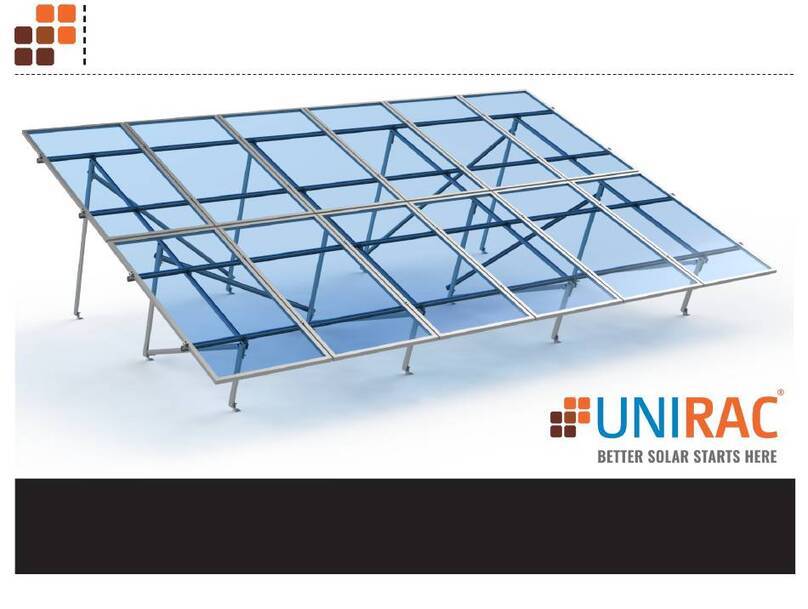
Page
2
Installation Manual 201.1 SolarMount®Top Mounting
10 year limited Product Warranty, 5 year limited Finish Warranty
UniRac, Inc., warrants to the original purchaser
(“Purchaser”) of product(s) that it manufactures
(“Product”) at the original installation site that
the Product shall be free from defects in material
and workmanship for a period of ten (10) years,
except for the anodized finish, which finish
shall be free from visible peeling, or cracking or
chalking under normal atmospheric conditions
for a period of five (5) years, from the earlier
of 1) the date the installation of the Product is
completed, or 2) 30 days after the purchase of
the Product by the original Purchaser (“Finish
Warranty”).
The Finish Warranty does not apply to any
foreign residue deposited on the finish. All
installations in corrosive atmospheric conditions
are excluded.The Finish Warranty isVOID if
the practices specified by AAMA 609 & 610-02
– “Cleaning and Maintenance for Architecturally
Finished Aluminum” (www.aamanet.org) are not
followed by Purchaser.This Warranty does not
cover damage to the Product that occurs during
its shipment, storage, or installation.
This Warranty shall be VOID if installation of
the Product is not performed in accordance
with UniRac’s written installation instructions,
or if the Product has been modified, repaired,
or reworked in a manner not previously
authorized by UniRac IN WRITING, or if the
Product is installed in an environment for which
it was not designed. UniRac shall not be liable
for consequential, contingent or incidental
damages arising out of the use of the Product by
Purchaser under any circumstances.
If within the specified Warranty periods the
Product shall be reasonably proven to be
defective, then UniRac shall repair or replace
the defective Product, or any part thereof,
in UniRac’s sole discretion. Such repair or
replacement shall completely satisfy and
discharge all of UniRac’s liability with respect to
this limited Warranty. Under no circumstances
shall UniRac be liable for special, indirect or
consequential damages arising out of or related
to use by Purchaser of the Product.
Manufacturers of related items, such as PV
modules and flashings, may provide written
warranties of their own. UniRac’s limited
Warranty covers only its Product, and not any
related items.
Installer responsibility
Figure 4. Rails may be placed parallel or perpendicular to rafters.
The installer is solely responsible for:
• Complying with all applicable local or national
building codes, including any that may supercede
this manual;
• Ensuring that UniRac and other products are ap-
propriate for the particular installation and the
installation environment;
• Ensuring that the roof, its rafters, connections,
and other structural support members can sup-
port the array under building live load conditions.
• Using only UniRac parts and installer-supplied
parts as specified by UniRac (substitution of parts
may void the warranty);
• Ensuring that lag screws have adequate pullout
strength and shear capacities as installed;
• Maintaining the waterproof integrity of the roof,
including selection of appropriate flashing; and
• Ensuring safe installation of all electrical aspects of
the PV array.
High-profile
mode
Low-profile
mode
Lower roof edge
Laying out
the installation area
The installation can be laid out with rails
parallel to the rafters (high-profile mode)
or perpendicular to the rafters (low-profile
mode). Note that SolarMount rails make ex-
cellent straight edges for doing layouts. Center
the installation area over the rafters as much
as possible.
Leave enough room to safely move around the
array during installation.
The width of the installation area is equal to
the length of one module.
The length of the installation area is equal to:
• the total width of the modules,
• plus 1 inch for each space between
modules (for mid-clamp),
• plus 3 inches (1½ inches for each set
of end clamps).
























